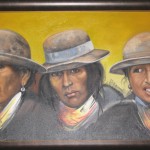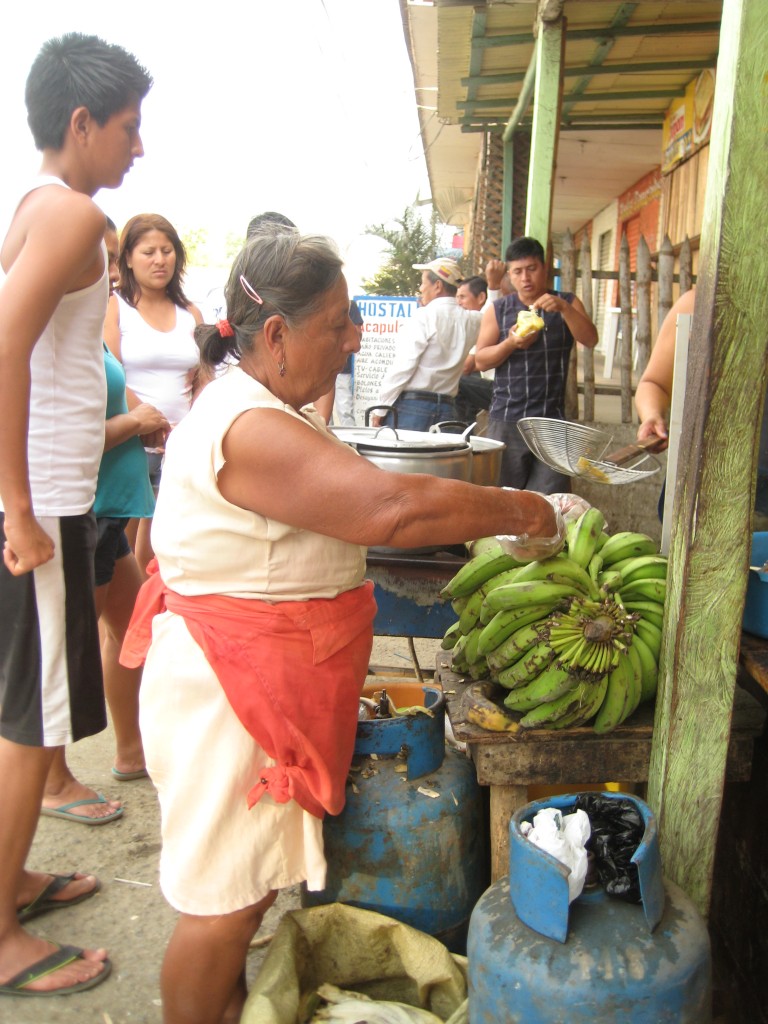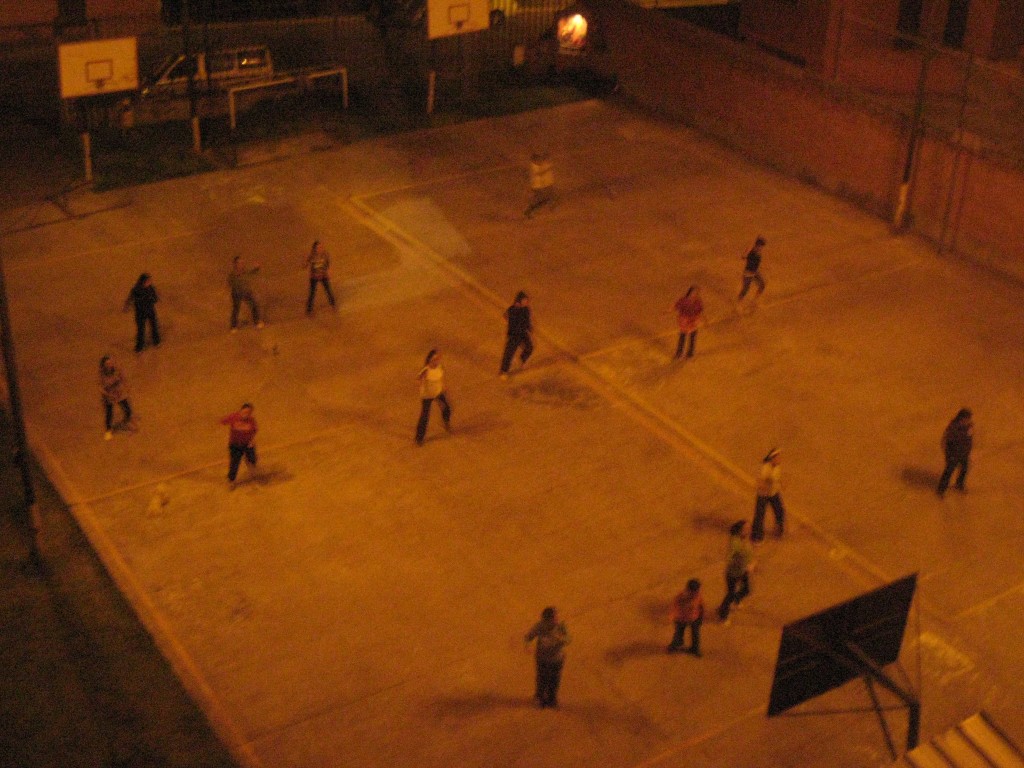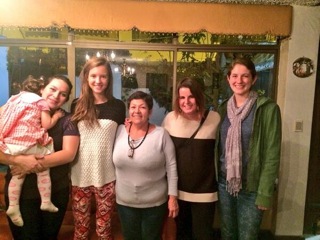 In this edition of “How to Meet People Abroad” series, we tackle a city that Melibee founder had the joy of living in for two months – Cuenca, Ecuador. We are thrilled that Pip Denne from El Nomad has shared her wisdom about meeting people in this very special city.
In this edition of “How to Meet People Abroad” series, we tackle a city that Melibee founder had the joy of living in for two months – Cuenca, Ecuador. We are thrilled that Pip Denne from El Nomad has shared her wisdom about meeting people in this very special city.
Making friends in a foreign country is genuinely difficult, especially for study abroad students have a natural tendency to flock together.
They compare stories of culture shock,
“Can you believe they eat rice EVERY DAY!?”
Talk of the times they surmounted language and culture barriers in style,
“My accent was so good that this guy thought I was a NATIVE”
And made epic culture faux pas,
“He went for a kiss on the check and I stupidly stuck out my hand”
Typically, the first place we find connection, and consequently, friendship, is in commonality. Similar interests, life circumstances, emotions and all in all, a sense of mutual understanding.

I go about my day trying to form friendships through a series of flailing arm gestures, improvised charades and fragmented Spanish palabras finished nicely with a painfully obvious Australian accent. It doesn’t exactly scream “mutual understanding”.
From time to time, I get those people that sympathetically take me out with their friends, the whole time shooting me worried looks and whispering words like, Que valiente! (She’s brave), que tan lejos de su casa ( she’s so far from home). Then there are those that make it pretty obvious, from the beginning, that they already have enough friends and certainly aren’t looking for any travelling, culturally illiterate, nomadic ones.
But this is the exception, not the rule. And if there is one thing that has struck me most about Ecuadorian people, it’s the strong desire to give, share and overall, to be together. From food to cultural exchange, they want to be with you. They want to hear the exotic nuances of your language (enthusiastically volunteering the words they already know) and learn about the place you call home.
So now for the logistics. Making friends isn’t matter of following instructions, but accessing culture is a critical part of it. Find your “in” and go for it.
1. Eat what they eat and eat when they eat.

Sounds kind of obvious right? But not all cultures put the same amount of emphasis on food and sharing food in the way that Ecuadorians do. From salchipapas (hot dogs and fries- cooked to perfection), humitas and tamales (corn based or “mote” based snacks, filled with melted cheese and other surprises. Wrapped, all present-like, in corn husk), empanadas de verde, patacones de verde and chifle de verde (every day treats made from plantain, a staple carb) and of course ice cream, and not just any ice cream, Ecuadorian ice cream (please don’t ask me to explain, its one of those things you just HAVE to try).
There’s no better environment to facilitate connection. Look at smiling, expectant faces while you are eating, and then you will understand.
2. Get involved in sport. To be specific, two sports- Bailoterapia and El Futbol.
Being in involved in these two sports, will almost assure you a nice mix of male and female Ecuadorian friends.

Bailoterapia, literal translation, “dance therapy”, is a free dance class – lets call it Ecuadors answer to Zumba. It runs every night and day in all of the parks around Cuenca. It was started in an attempt to promote exercise culture in Cuenca and now all women, young and old, curvy and thin, serious and not so serious, are all in on the action. Generally speaking, this upbeat exercise session is followed by lively conversation over late night humitas and coffee. Boom- two in one!
El Futbol is well, el futbol. Watch it or play it, it doesn’t matter. Just follow the crowd.
3. Go salsa dancing!
You want to walk the walk and talk the talk? It’s time to Salsa. In Ecuador, dancing is a big part of expressing oneself, there’s no shyness or embarrassment, only music. They listen carefully and move accordingly. Every Ecuadorian knows how to shake it and while your booty might never be up to challenge, it’s worth a try.
Take lessons in a private class and then hit the dance floor. There are plenty of places around Cuenca that will give you the opportunity to show off your moves.
4. Use the connections and resources that have been given to you.

If you are on a study abroad program, it is important to remember that study abroad providers are there for your support! From TANDEM partners at the local university, to organizing activities at local events to pointing you in the direction of local ‘secret spots’, study abroad providers are there to facilitate cultural immersion. Use these resources, ask questions, be open-minded and don’t hesitate.
When crossing cultures, the world is your oyster. Culture is there for your taking and friends are always to be found. Just be sure to make the effort immediately upon arrival and you’ll find yourself living like a local sooner than you ever imagined!
 About the Author: Born and breed in the blue mountains, just outside of Sydney, Australia, Pip Denne has always been spoilt for beautiful country side and adventurous sports. Her passion for writing and travelling started at 18, as she embarked on a 3-week trip around Japan. It was well documented, to say the least, and inevitably eventuated in even more travel around the world. From Asia to South America, Pip is slowly ticking the continents off her list. The future is still a mystery, that’s the best part about it, but she aims to embrace a whole variety of international opportunities in the search for unrivaled natural beauties, unique culture and all things big and small that the world has to offer. Pip is currently working with El Nomad in Cuenca, Ecuador.
About the Author: Born and breed in the blue mountains, just outside of Sydney, Australia, Pip Denne has always been spoilt for beautiful country side and adventurous sports. Her passion for writing and travelling started at 18, as she embarked on a 3-week trip around Japan. It was well documented, to say the least, and inevitably eventuated in even more travel around the world. From Asia to South America, Pip is slowly ticking the continents off her list. The future is still a mystery, that’s the best part about it, but she aims to embrace a whole variety of international opportunities in the search for unrivaled natural beauties, unique culture and all things big and small that the world has to offer. Pip is currently working with El Nomad in Cuenca, Ecuador.

